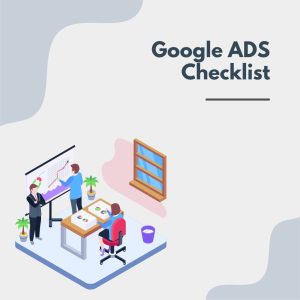
Display Advertising, also known as media advertising, is a type of paid online advertising that combines text, images, and a URL leading to a website where the buyer can learn more about the company’s products or make a purchase. Media internet advertising appears on websites, in applications, and on social networks.
Objectives of Display Advertising
An advertising campaign involving Display Advertising can have various goals. For this reason, one media advertisement may inform about a product, while another may be designed for entertainment and engagement through simple games or puzzles. Media banner advertising is a common form of media advertising often used in informational campaigns. The main objective of internet media advertising is to increase the recognition of your brand, product, or service.
Types of Display Advertising
The first-ever Display Advertising was a banner for AT&T in 1994. Surprisingly, 44% of people who saw the media advertisement clicked on it. The first media advertising on the internet had this form:

Starting from the first generation of Display Advertising, an agreement was developed for using standalone images with a call to action in various square and rectangular sizes. Since then, media advertising has evolved, and now we can distinguish the following types:
- Traditional Display Advertising: This type of advertising is most closely associated with media advertising. Traditional Display Advertising includes horizontal, square images, or vertical banners. This media banner advertising is primarily a graphical element with minimal text and is usually placed on websites.
- Adaptive Display Advertising: Adaptive Display Advertising is based on multiple text headlines, descriptions, and images that the advertising platform algorithm uses to place, size, and orient the ads in various combinations. The platform determines the most effective format for the specified audience.
- Retargeting Display Advertising: Retargeting or remarketing is an advertising mechanism where media ads are shown to people who have visited your website (usually a specific page or set of pages) within a specified period but have not yet taken the desired action. Retargeting media advertising is an excellent tool for personalized content.
- Native Display Advertising: Native Display Advertising is designed and placed in the same style as the content of the website, email, or other resource. You may notice native ads as promoted or recommended content on various sites, but they usually do not resemble typical advertisements.
- Social Ads: Social Ads are Display Advertising seen on social networks such as Facebook or LinkedIn. Like adaptive media advertising, Social Display Advertising is a combination of text and images with a call to action.
- Discovery Ads: Discovery Display Advertising is a form of native advertising that, through machine learning, showcases graphical resources in the most user-friendly format. Discovery Display Advertising appears on social networks, Gmail ads, in YouTube and Google Discover search results, and on Watch Next tabs.
What is the difference between media advertising and banner advertising?
Some people use the terms “Display Ad” and “Banner Ad” interchangeably. However, creative banners, i.e., banner advertising, represent just one size within the spectrum of media advertising. The best banner ads are complemented by media advertising of various sizes on the same website or within the same application. Other common sizes include square, full-size banner, vertical banner, and wide vertical banner.
Formats
While media advertising can take various forms, let’s highlight the most popular formats of Display Advertising:
- Static: A single static image, usually accompanied by text.
- Animated: Utilizes 5-10 seconds of cyclically played video or GIF.
- Interactive: Requires viewer participation, such as responding to a survey, engaging in a small game, or providing personal information.
- Video Format: As the name suggests, video advertising uses standalone video clips to convey messages. Unlike animated media advertising, where the recorded material lasts only a few seconds, video ads are longer but typically do not exceed 30 seconds.
- Expanding: Expanding media internet advertising initially appears small and expands when the user performs a specific action, such as clicking or hovering the mouse cursor over them.
Placement
These three major networks are responsible for the placement of the majority of media advertisements:
- Google Display Network: Google provides an optimized platform that helps brands target their audience. When using this network, it’s essential to be mindful of Google’s media advertising specifications. Similar rules apply to Google Ads video formats.
- Facebook Audience Network: If you work in marketing, you may have heard of the “duopoly” between Google and Facebook. This holds true in the realm of online media advertising as well. Facebook Audience Network ads are designed to increase revenue through advertising creatives and measurement solutions.
- Twitter (X) Audience Platform: Although Twitter’s (X) platform is not as extensive as Google and Facebook, it still plays a significant role in the world of media advertising. The Twitter Audience Platform boasts a reach of 700 million people, making it an effective network for media advertising.
Advantages of Online Display Advertising:
- Measurable: Typically measured using metrics like Cost Per Click (CPC) or Cost Per Action (CPA).
- Easily Adaptable: Can be easily edited, copied, or replaced with different images.
- Testing Capabilities: Allows experimentation with different creatives in online media advertising to determine which colors, images, or calls to action resonate best with customers.
- Cost-Effective: Particularly when comparing click costs with other traditional advertising formats, such as search engine marketing.
- Tailored to Your Audience: Complements other marketing strategies, such as social media marketing, to reinforce your message. Subject to remarketing, allowing interaction with an audience familiar with your brand or product but who haven’t made a purchase.
Disadvantages of Online Display Advertising:
- User Disapproval: Presenting itself frequently to users, Display Advertising can be perceived as intrusive. This may lead consumers to either ignore it (resulting in “banner blindness”) or install software to block Display Advertising.
- Low CTR and Conversion Rates: This means that Display Advertising may generate fewer sales or fewer responses to the media ads.
- Less Competitive: Due to the saturation of Display Advertising, it is not a competitive format for promoting new companies.
Evaluating the Effectiveness of Display Advertising:
Marketers use Key Performance Indicators (KPIs) to assess how well a specific advertising campaign is performing. Whether your goal is to increase brand awareness, attract potential customers, or drive actions, monitoring these four key performance indicators will keep your media campaign on the right track. Let’s delve into each of these Display Advertising KPIs in more detail:
- Impressions: When Display Advertising is shown, it generates impressions. They help determine how many times the ad appears on a web page. Impressions simply indicate the viewing of media advertising. Users do not need to click, hover, or interact with the ad for an impression to occur. A high number of impressions indicates that your ad is reaching a wide audience. More views increase the chances of conversion. However, if you find that other key performance indicators (e.g., engagement) are not growing alongside impressions, it’s worth reconsidering your media campaign strategy. To enhance conversion, pay attention to the placement of your ads, when they should be visible, and to your target audience.
- Reach: Reach measures how many people see the ad. This KPI determines the number of unique views a specific Display Advertising receives. A unique view means that your ad is seen once by one person. If the same person views the same ad twice, it does not count as two contacts. Tracking reach metrics ensures that you are not wasting time and money showing ads to the same person. This can help increase brand awareness, but if your ad continues to be seen by the wrong person, you may overlook those who matter. As more people experience ad fatigue, it would be wise to tailor your media campaign to the desired market.
- Engagement Level: Engagement level is usually expressed as a percentage and shows how many people interact with Display Advertising. This can be a simple action, such as hovering over the ad, or something more complex (in the case of multimedia), such as watching an embedded video clip or listening to audio. High engagement percentages strongly correlate with higher conversion rates. If a person shows interest by interacting with the ad, they may want to learn more about what is being offered. Including interactive elements in your media campaign can increase engagement percentage and potentially boost consumer participation in the long run.
- Click-Through Rate (CTR): Some experts argue that tracking the Click-Through Rate (CTR) is a futile exercise. This is because the culture of Display Advertising and the internet as a whole is rapidly changing. This practice may seem outdated as media advertising competes with new digital advertising methods, but CTR still stands as a valid KPI. Essentially, CTR allows you to know how many people click on your ad after viewing it. Like engagement metrics, CTR is recorded as a percentage. It is calculated by dividing the total number of clicks on the ad by the total number of impressions.
Conclusion:
Display Advertising is an effective advertising format that allows for increased brand awareness and a solid user base. We recommend trying to incorporate media advertising along with other marketing types to attract users throughout their customer journey.
You can always order this type of advertising from our organization.





Pingback: Google Ads Audit Checklist | FADS